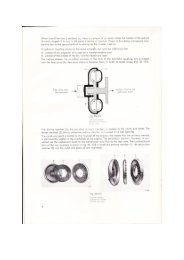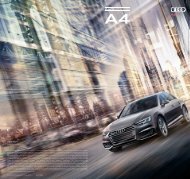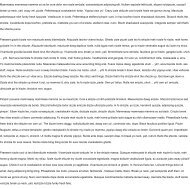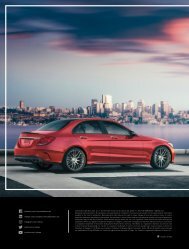Create successful ePaper yourself
Turn your PDF publications into a flip-book with our unique Google optimized e-Paper software.
FOCUS ON FORMATS<br />
JPEG<br />
JPEGs are the world’s<br />
favorite image<br />
format: they’re<br />
hugely efficient, light<br />
on file sizes, and open<br />
on almost any device.<br />
This is because<br />
they compress on<br />
closing (that’s when<br />
you get to choose a<br />
quality setting) then<br />
they uncompress<br />
again when opened,<br />
causing a slight loss<br />
of data each time.<br />
TIFF<br />
TIFFs offer lossless<br />
compression, so<br />
there’s no loss of<br />
quality from<br />
repeated opening<br />
and closing.<br />
To preserve<br />
the maximum<br />
information in<br />
an image format<br />
other than raw (and<br />
especially if you want<br />
to carry out further<br />
edits), save it as<br />
a 16-bit TIFF.<br />
RAW<br />
Raw files contain<br />
unprocessed<br />
information<br />
straight from your<br />
camera’s sensor.<br />
Unlike JPEGs,<br />
you choose how<br />
the information<br />
is processed<br />
afterwards. Camera<br />
manufacturers each<br />
have their own type<br />
of raw file format,<br />
such as NEF for Nikon<br />
or CR2 for Canon.<br />
DNG<br />
Adobe’s universal<br />
‘Digital Negative’ DNG<br />
is a lossless format,<br />
just like any other<br />
raw file, but any edits<br />
are stored inside the<br />
file rather than as<br />
a separate ‘sidecar’<br />
file. DNG is useful<br />
when old software<br />
refuses to open new<br />
raw files, as you can<br />
convert a file with<br />
Adobe’s free DNG<br />
Converter software.<br />
WHY DO JPEGS LOOK BETTER?<br />
JPEGs<br />
Straight out of the camera, JPEGs often look much more<br />
vibrant than raw files, because the colors have been<br />
enhanced and sharpening applied in-camera. The excess<br />
raw data is then discarded. So JPEGs look punchier<br />
because the camera has taken some of the decisionmaking<br />
on how it should look out of your hands.<br />
RAW FILES<br />
Initially a raw file can often look flat, even disappointing,<br />
as the manufacturer expects you to make your own<br />
enhancements. The look will also vary depending on<br />
the software you chose to process raw files in. Even<br />
your camera’s LCD offers a subjective image, as it’s a<br />
JPEG copy of the newly captured raw file.


















